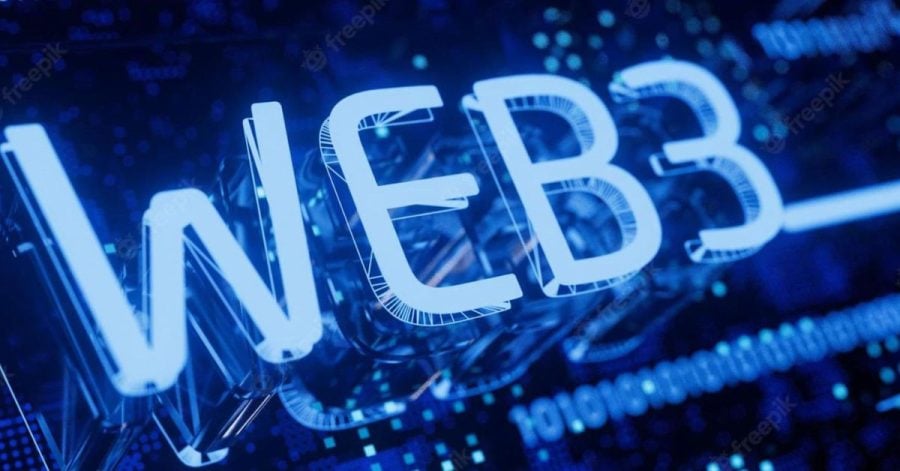With a market size expected to reach $81 billion by 2030, the future of the Web3 industry looks to be bright as many companies and startups worldwide are working to introduce new products and solutions in the following period. While 2022 has brought many challenges particularly for blockchain and crypto-related projects, whose technology is also intertwined with Web3, the next year could be crucial for the practical implementation of many of these concepts. We also expect to see other Web3 trends such as regenerative finance take off.
The current Web3 cycle might be longer than previous ones not only because of internal factors but also due to the overall state of the global economy, experts argue. And the current dynamic became even more complicated with the collapses of big industry players that were plugged deep into the key infrastructure projects.
“It has underlined a still unresolved issue of the prevalence of semi-centralized agents in the industry. Such actors often focus on product revenue optimization, neglecting transparency and open-source pillars of the Web3 narrative,” Aleksandra Nik and Polina Vertex, co-founders of Web3 consulting agency Syntagma Labs, tells The Recursive.
Thus, no mechanics exist yet to guarantee that similar tectonic movements won’t happen in 2023. However, some hedging strategies can be employed, experts point out.
“For existing projects, this calls for revisiting their treasury management and revenue generation to build a robust financial backbone. Launching initiatives, alternatively, have the opportunity to establish secure connections with various industry players and diversify risks from the start.
However, winter is more beneficial for crypto than most people think. Firstly, the purge of money-grabbing projects attracted only by hype contributes to a healthier ecosystem. The remaining actors are here for the long run, which means it is time for builders who deeply understand the system and strive to create better infrastructure,” Nik and Vertex tell The Recursive.
Therefore, 2023 can also bring a bigger adoption of Web3 as many will start to realize that it has to offer plenty of benefits over traditional systems such as increased security and transparency, lower costs, faster transactions, and more efficient storage space. Next, dive deeper into the Web3 trends of the moment.
Zero-knowledge proof theory
However, the key to understanding the future of Web3 is to first understand the current trends in the industry.
One trend that is taking place and promises to have a big impact during 2023 is the emergence of zero knowledge proof. These are methods that allow one party to prove they have a certain data without revealing any information about it. This allows for greater privacy and security when using blockchain technology.
“People who know Zero-Knowledge Proof theory or have hands-on experience are also becoming in demand, as we are seeing the growth of these protocols,” Ivan Pavicic, CTO of Zagreb-based independent blockchain development agency SpaceShard tells The Recursive.
Gaming and VR
The trend of bringing Web3 mechanics into gaming and VR will also spill over into 2023, experts predict. Gaming in Web3 will also look to leverage blockchain technology as a key component.
“As one of the key drivers for mass adoption, this will force a surge of Web3 UI/UX improvements. Moreover, smaller capitalization pushes the projects to consider tokens less like a fundraising instrument and more like crucial elements of the product that underpin the internal economy. Hopefully, this will lead to the creation of more thought-out product economies and the rebalancing of existing ones,” the Syntagma Labs founders explain.
A more practical use for NFTs
2023 can also prove to be a crucial year when NFTs will also see a more practical use, and stop being an overhyped phenomenon.
“We are also seeing a perception of NFT switching from the over-hyped must-haves to the proper instruments of IP management. Since there is no longer a first-mover advantage in the field of art-related NFTs and Metaverses, more and more virtual-identity NFT projects will be springing up as well as targeted 3D experiences related to particular websites and brands,” Nik and Vertex tell The Recursive.
Custody of assets
Another trend that is emerging is custody, or who will be responsible for holding your assets and data on a blockchain network? There are several different types of custody, but one type that we will see more of in the future are decentralized custody solutions where no single entity has control over your assets.
“Emerging trends for Web3 and blockchain in 2023 will hone in on adoptability, scalability, custody, and regulation especially after the FTX situation in 2022. The bear market will prolong into the New Year, and previous bear markets are when the most R&D, innovation, and building has happened. 2023 trends will include a continuation of 2022 thematic trends such as more on ramps, layer 2 scalability options, blockchain (play to earn) gaming, and VR/Metaverse concepts,” investor and venture capitalist Semir Gabeljic tells The Recursive.
Additionally, people will also become more diligent with their crypto investments, Vali Malinoiu from Humans.ai argues.
“As we’ve seen, the second biggest crypto exchange in the world had close to nonexistent financial hygiene, no security protocols, no collateral coverage of their printed tokens, and the most important thing is that it wasn’t regulated outside of the US. People lost their savings, hedge funds lost their investors’ money, projects collapsed, and the bear market deepened even more, but, on the positive side, people will become more diligent with their investments, and Web3 teams will have to become more responsible and transparent,” Malinoiu tells The Recursive.
Regenerative Finance (ReFi)
According to blockchain expert and ecosystem Armin Konjalic, ReFi is going to be yet another emerging Web3 trend for 2023.
“Self-custody, social media and messaging on blockchain – Lens Protocol, and green & sustainable regenerative finance will be among the Web3 trends for 2023,” Konjalic tells The Recursive.
When it comes to ReFi, its main focus is on the creation of systems that restore and preserve the physical resources and mitigate the effects of carbon emissions. Therefore, it is expected to play an important role in the Web3 innovation and projects that are looking to achieve a positive environmental impact.
Feel that we have missed some upcoming trends? Feel free to give us a shout and let us know your thoughts on emerging Web3 trends.








